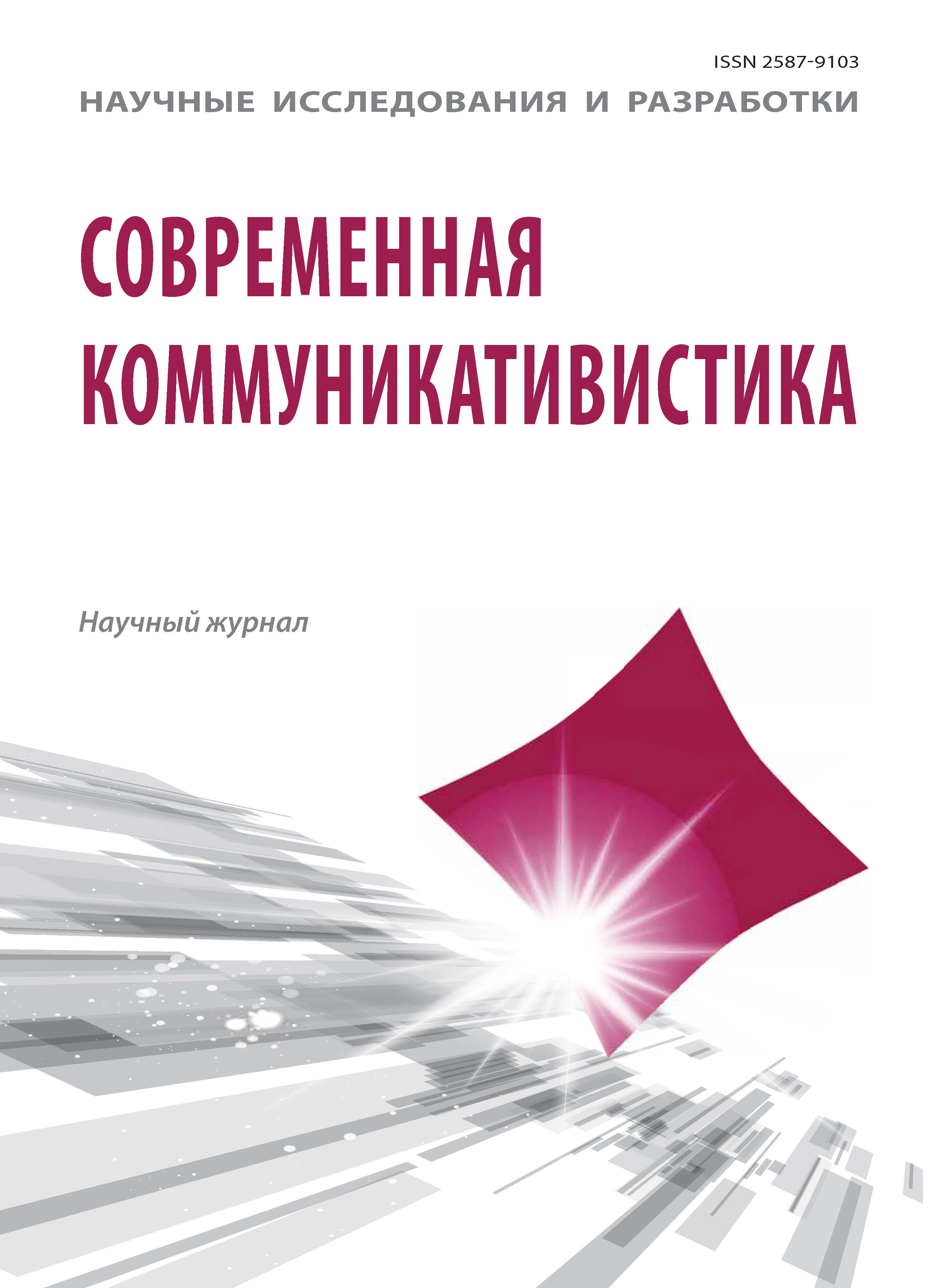The presented article tests the application of the method of quantitative content analysis to identify the spread of confrontational tendencies in the public consciousness. It proves the broad possibilities of monitoring and forecasting conflicts in society on the basis of it. The source base of the study was the archives of the New York Times newspaper for the period from 1851 to 2019. The author calculated the number of used indicative conflict-containing lexemes, the integrated dynamics of which expresses the coefficient of confrontation. The coefficient of confrontation correlates with the dynamics of conflicts in the history of the United States and the world, explanations of the increase and decrease of the corresponding indicators are given. The maximum phases of the confrontation coefficient fall on the period of the Second World War and the modern period. Modern maximization is viewed as a significant threat to the security of Russian society.
content analysis; conflict; conflicting lexemes; coefficient; confrontationalism; correlation analysis; New York Time
1. Bagdasaryan V.E. Kognitivnye matricy manipulyativnyh tehnologiy v voynah i revolyuciyah novogo tipa // Vestnik MGOU. Seriya: Istoriya i politicheskie nauki. 2020. №1. S. 8-23.
2. Bagdasaryan V.E. Praktika i kvazinauchnye instrumenty ideologicheskogo prikrytiya latentnogo upravleniya mirom // Gumanitarnye i estestvennye nauki: problemy sinteza. Materialy Vserossiyskoy nauchnoy konferencii. (Moskva, 3 aprelya 2012 g.). M.: Nauchnyy ekspert, 2012. S. 145-174.
3. Bagdasaryan V.E., Sulakshin S.S. Vysshie cennosti rossiyskogo gosudarstva. M.: Nauchnyy ekspert, 2012. S. 396-420.
4. Basovskaya E. N. Tvorcy cherno-beloy real'nosti: o verbal'noy agressii v sredstvah massovoy informacii // Kritika i semiotika. Vyp. 7. 2004. S. 257-263.
5. Vinogradova N.S. Politiko-psihologicheskiy analiz obraza Rossii v anglo-amerikanskih pechatnyh SMI (issledovanie 2008-2009gg.): dis. … kand. polit. nauk. M., 2010. 141 s.
6. Voroncova T.A. Rechevaya agressiya: kommunikativno-diskursivnyy podhod: diss. … d-ra fil. nauk. Chelyabinsk, 2006. 296 s.
7. Devidson F. Voyna vo V'etname (1946-1975). M.: Izografus, Eksmo, 2002. 489 s.
8. Evstaf'eva A.V. «Yazyk vrazhdy» v sredstvah massovoy informacii: lingvisticheskie i ekstralingvisticheskie faktory funkcionirovaniya»: dis. … d-ra filol. nauk. Tol'yatii. 2009. 298 s.
9. Kolosov S.A. Konstruirovanie social'noy nenavisti v diskurse: dis. … kand. fil. nauk. Tver', 2004. 156 s.
10. Kuznecov D. Sobytiya 11 sentyabrya 2001 goda i problema mezhdunarodnogo terrorizma v zerkale obschestvennogo mneniya. M.: URSS, 2009. 400 s.
11. Litvinova V.Yu. Kontent-analiz kak sredstvo organizacionno-metodicheskoy diagnostiki obrazovatel'nogo process v srednem professional'nom obrazovanii: dis. … kand. ped. nauk. Taganrog, 2006. 152 s.
12. Mal' K.M. Grazhdanskaya voyna v SShA 1861-1865. M.: AST; Minsk: Harvest, 2002. 502 s.
13. Markina Yu.V. Gazeta «New York Times»: evolyuciya tipa izdaniya: evolyuciya tipa izdaniya: dis. … kand. filol. nauk: Rostov n/D, 2004. 167 s.
14. Osberi G. Bandy Chikago. M.: Centrpoligraf. 2004. 350 s.
15. Stepanov V.N. Provokativnyy diskurs massovoy kommunikacii: dis. … d-ra filol. nauk SPb., 2004. 380 s.
16. Uchenye: kolichestvo nasiliya v fil'mah v SShA za 60 let vyroslo vchetvero// URL:http://ria.ru/culture/20131111/975912642.html (data obrascheniya: 15.03.2020).
17. Fedorchenko S.N. Global'noe issledovanie politizacii social'nyh setey // Obozrevatel'-Observer. 2016. №8(319). S. 57-67.
18. Fedotova L.N. Analiz soderzhaniya sovetskogo i amerikanskogo televideniya kak sostavnaya chast' sravnitel'nogo issledovaniya//Materialy 3-y Vsesoyuznoy konferencii «Metody sociologicheskih issledovaniy». Vyp. 2. M, 1989. S. 31-37.
19. Cherepanova I.Yu. Verbal'naya suggestiya: teoriya, metodika, social'no-lingvisticheskiy eksperiment: diss. … dokt. fil. nauk. M., 1996. 181 s.
20. Yazyk vrazhdy i yazyk soglasiya v sociokul'turnom kontekste sovremennosti: Kollektivnaya monografiya. Ekaterinburg: Izdatel'stvo Ural'skogo universiteta, 2006. 560 s.
21. Azriel J. Internet hate speech in the United States and Canada: A legal comparison. University of Florida, 2006. 223 r.
22. Barnett B.A. Untangling the web of hate: Are online «hate sites» deserving of First Amendment protection? Bowling Green State University, 2005.
23. Boromisza-Habashi D. Hate speech as cultural practice. University of Massachusetts Amherst, 2008. 298 r.
24. Bushman B.J., Jamieson P.E., Weitz I., Romer D. Gun Violence Trends in Movies // Pediatrics. 2013. № 12. P. 1014-1018.
25. Davis E.H. History of the New York Times, 1851-1921. New York: The New York Times, 1921. 434 r.
26. Frosch D., Krueger P., Hornik R., Cronholm P., Barg F. Creating Demand for Prescription Drugs: A Content Analysis of Television Direct-to-Consumer Advertising //Annals of Family Medicine, 2007. January 1. Vol. 5. R. 6-13.
27. Kennedy D.M. Freedom from Fear : the American People in Depression and War, 1929-1945 New York; Oxford: Oxford University Press, 2001. 988 p.
28. Stemler S. An overview of content analysis // Practical Assessment, Research & Evaluation, 2001. 7(17). R. 44-49.
29. Taylor Paul C. Race. A philosophical introduction. Cambr., UK: Polity Press, 2004. 240 r.
30. The New York Times. URL: https://www.nytimes.com/search/#/war/from18980101to18981231/ (data obrascheniya: 15.03.2020).
31. Tillman S.S. Cyberspace hate speech: First Amendment freedom versus the necessity of federal regulation. Bowie State University, 2010. 249 r.
32. Vanacker B.H. Online Hate Speech Regulation in the United States and Europe: Accommodating Conflicting Legal Paradigms. University of Minnesota, 2006. 626 r.
33. Vlieger E., Leydesdorff L. Content Analysis and the Measurement of Meaning: The Visualization of Frames in Collections of Messages //The Public Journal of Semiotics, June 2011. III (1). R. 28-50.
34. Weare C., Lin W.Y. Content analysis of the World Wide Web-Opportunities and challenges //Social Science Computer Review, 2000. 18(3). R. 272-292.







